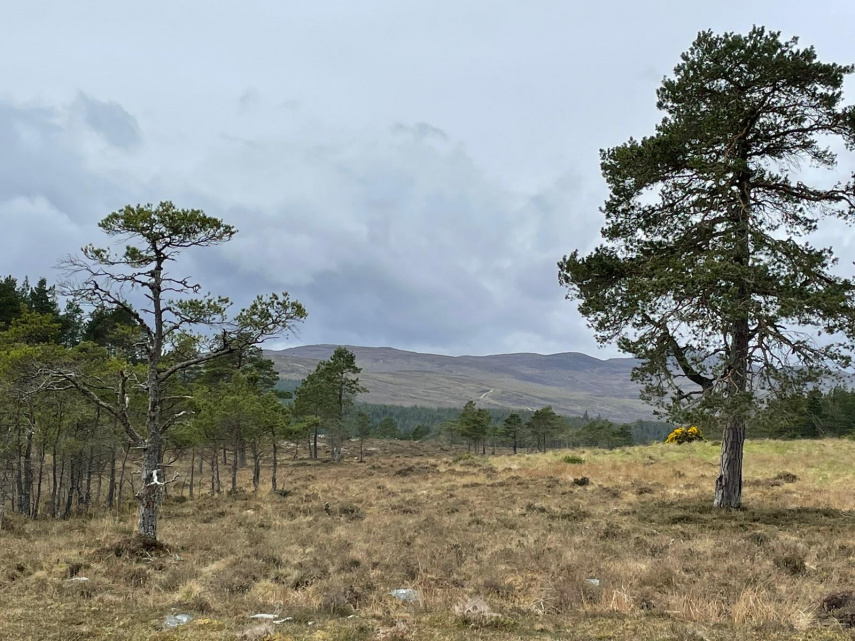
Scotland’s Land and Natural Capital – Are there still big questions to answer?
James MacKessack-Leitch
In our latest blog, Policy and Practice Lead James MacKessack-Leitch looks at the issues, and questions, raised in two new discussion papers: 'Natural capital, carbon offsetting and land use' by Prof Dieter Helm; and 'Carbon Markets, Public Interest and Landownership in Scotland' from Dr Jill Robbie and Dr Giedre Jokubauskaite.
Before diving into the issues it’s worth clarifying what we actually mean by ‘natural capital’ – and what we don’t. Scottish Government has defined natural capital as, “the renewable and non-renewable stocks of natural assets, including geology, soil, air, water and plants and animals that combine to yield benefits to people,” which clearly means much more than just carbon.
It's worth reflecting in this context that our use – and abuse – of natural capital has been going on for as long as humanity has existed. From hunting and gathering, through agriculture, forestry, mining, drilling, and now carbon sequestration, it’s vital for our very survival that we continue to make use of the resources provided through natural capital.
What’s changed is the realisation that, since the industrial revolution, too much of this use has become abuse – perhaps unwittingly, though ignorance is no longer an excuse – to the point where we’re confronted by a range of crises, particularly in nature and climate change.
Collectively we know that current land use practices need to change, and we have a reasonably clear aspiration about where we want to go, but as Prof Dieter Helm points out in his paper, we’re not very good at seeing the bigger picture, establishing baselines, ensuring our accounting is in order, or ‘capital’ management is holistic.
This lack of foresight, combined with an unregulated land market, could be facilitating, as Helm notes, “a carbon offset-driven land grab”. While the opportunities may be significant, so too are the risks. Helm cautions that while so much of the carbon maths is opaque – if not being done in the dark – that because of the long-term nature of these projects it could takes years or decades for consequences to emerge.
Can we be sure that – even with the best intentions – we’re not just contributing to global greenwashing? Are the inevitable trade-offs being accurately considered? What recourse do carbon credit buyers have if their credits turn out to be less than advertised? What if, in trying to solve one crisis, we make another worse? What’s the risk of reputational damage to individuals, communities, businesses, government, indeed Scotland collectively, if it all goes wrong? So many questions are being raised at this stage of rapid market development.
None of these questions is unanswerable, or the solutions insurmountable. Helm’s overarching conclusion is for better land use planning – and not just to include natural capital concerns, but to make explicit links with social and human capital to support a healthy population, sustainable enterprise, and vibrant communities.
Coincidentally, or perhaps just great minds thinking alike, better planning is also one the of key recommendations made by Dr Jill Robbie and Dr Giedre Jokubauskaite in their legally-focussed paper.
As a clear, concise, and accessible explanation of the current frameworks governing the voluntary carbon market – as well as some of the emerging issues – Robbie and Jokubauskaite’s paper is a must-read for anyone trying to get their head around what’s going on right now.
Acknowledging that carbon sequestration is only the latest use found for our natural capital, Robbie and Jokubauskaite reflect on the legal approaches that arose historically when existing natural resources acquired a new use or value which made them vulnerable to exploitation.
Minerals (which can be owned) and water (which cannot) both have long histories of regulation, but wind is perhaps currently the best parallel. The transition to renewable energy highlights the value of wind, yet no one is trying to claim ownership of the wind. However, the value of the energy extracted from wind can only be realised with access to land to construct turbines and associated works – and the consent of the land owner.
This is also the practical reality for carbon sequestration. Carbon ownership is simply not practical, but access to land and entering into contractual relationships on the basis of payment for carrying out specific activities very much are.
This might seem obvious, but it’s crucial to understanding how any regulation may take shape. If we agree that carbon trading constitutes a contractual relationship, then regulation will follow contract law principles. The alternative, if the case was made for carbon as a property right, would likely be far more complex.
For Robbie and Jokubauskaite though, the contractual context is clear, and in setting out a range of potential recommendations there are two robust and realistic options – better planning, and better oversight. Intriguingly, one option they raise is oversight through a Carbon Commissioner, similar to the Tenant Farming Commissioner (TFC), providing a more flexible and responsive approach to overseeing a rapidly developing market, as well as someone to monitor the commitments being made.
Better land use planning is not a new or novel argument, and indeed is one the Scottish Land Commission has addressed before through our advice on Regional Land Use Partnerships, but it reinforces the point that land use change is not a zero-sum game and that there’s a real need for greater public interest-led mechanisms. Similarly, regulation of resource use or contractual relationships doesn’t need to be complex or clunky, as the TFC experience ably demonstrates.
The Scottish Land Commission’s work is addressing the implications for the land market and what responsible practice looks like on the ground. But these two discussion papers suggest there is still considerable thought needed in shaping long term regulatory frameworks, and much to be learned from wider economic and legal parallels.
Upcoming events
To find out more, join us online on Tuesday 31 May at 4 pm for 'The Carbon Rush: Understanding the role of carbon, offsetting and investing in the land market'. This live event is the second in our 'Natural Capital and Land' series and will look at the published Land Lines discussion papers by Prof Sir Dieter Helm, Dr Jill Robbie and Dr Giedre Jokubauskaite, exploring the role of carbon in land ownership and use. For full panel details and booking information please visit the event page.
